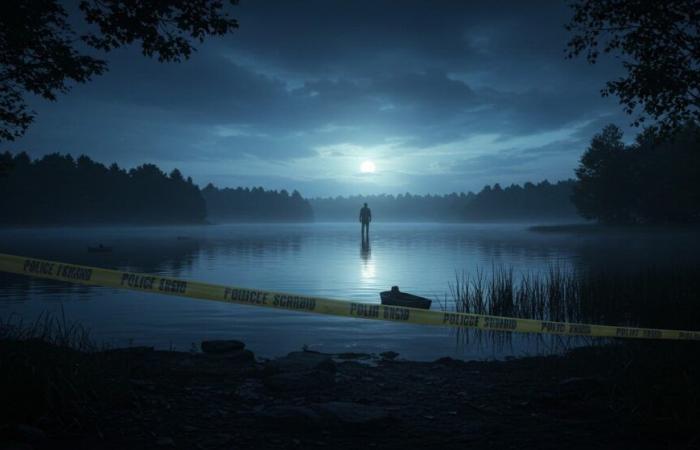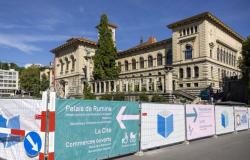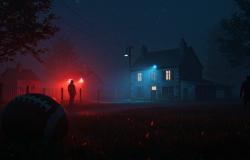A lifeless body discovered near Lake Grigny. Three suspects in police custody. An argument under the influence of alcohol would be the cause of the drama. What really happened?
Imagine a peaceful spring day, troubled by a macabre discovery. Near the banks of a lake, a lifeless body lies, surrounded by traces of blood. This is what happened in Grigny, a town in Essonne, where a drama shook the tranquility of residents. A merchant, alerted by a drunk man, gave the alarm, triggering an investigation for voluntary homicide. What happened by this lake? Let us dive into this affair which mixes violence, alcohol and mysteries.
A drama in the heart of Grigny
On May 4, around 1 p.m., a local merchant received an unexpected visit. A man, visibly tipsy, entrusted him with disturbing information: he discovered an inert body near Lake Grigny. “He is dead,” he said, before moving away. Without losing a second, the merchant contacted the authorities, triggering a rapid intervention by the Juvisy-sur-Orge police.
On the spot, the police, guided by the alcoholic man, confirm the terrible reality. A lifeless body rests near the banks, marked by disturbing injuries. Traces of blood around the head and lesions in the face give way to doubt: death seems violent. According to the first elements, the victim died several hours earlier.
“Visible injuries suggest an act of great brutality,” says a source close to the investigation.
An investigation for voluntary homicide
Faced with these clues, an investigation for voluntary homicide is immediately open. The organized and specialized crime division (DCOS 91) takes the reins of investigation. The first suspicions focused on the man who alerted the merchant. His remarks, described as “confused” by the investigators, raise questions. Even more disturbing, he admits having moved the body before giving the alert, an act that intrigues the authorities.
Quickly, this individual was arrested and placed in police custody. But the investigation does not stop there. Two other suspects, identified in stride, are arrested. These are two men of Romanian origin, aged in forty years, and a third born in Moldova. All are known to the police, and the first two have no residence permit.
The first elements of the investigation:
- A body discovered near Lake Grigny.
- Wounds suggesting a violent death.
- Three suspects in police custody.
- A track linked to an argument under the influence of alcohol.
An argument on a background of alcohol
The investigations point to a tragic scenario: a violent altercation, probably supplied by alcohol. According to investigators, the victim, a homeless man whose age remains unknown, was involved in an argument with the suspects. The blows were would have been of such a force that they resulted in death.
This type of drama is not isolated. Problems related to the consumption ofAlcohol on public roads are recurrent in certain areas of Grigny. Local authorities have also taken measures in recent years, such as the night closure of convenience stores to limit disorders. But this news item recalls that tensions persist.
“Alcohol can transform a simple argument into a tragedy,” deplores an experienced police officer.
-
Who was the victim?
Little information has filtered on the identity of the victim. Described as a fixed homeless, this man remains, for the time being, an enigma. Was he known to suspects? Was he part of a group regularly attending the surroundings of the lake? These questions remain unanswered, but they are at the heart of the investigation.
The condition of homeless people is a sensitive subject. Often marginalized, they are sometimes exposed to violence, whether in interpersonal conflicts or targeted attacks. This drama highlights a complex social reality, where precariousness and alcohol can form an explosive cocktail.
| Aspect | Details |
|---|---|
| Victim | Man, homeless, unknown age |
| Suspects | Three men, two of whom of Romanian origin and a Moldavian |
| Cause probable | Argument under influence of alcohol |
Grigny: a commune under tension
However, Grigny is not limited to these various facts. The municipality also carries positive initiatives, such as projects to combat food waste or employment programs. But this drama by the lake revives debates on the security and management of public spaces.
Contexte local :
- Grigny fights against alcohol -related disorders.
- Strict measures on night businesses.
- A municipality in search of renewal despite the challenges.
Judicial police challenges
The survey, entrusted to the DCOS 91, promises to be complex. The suspects, although known to the police, have not yet delivered a clear version of the facts. The interrogations continue, and the investigators explore all the tracks, including that of a personal dispute between the victim and his alleged attackers.
The judicial police must also deal with sometimes inconsistent testimonies, such as that of the alcoholic man who gave the alert. His exact role in the case remains vague: a simple witness or involved in the drama? Medical analyzes, especially the autopsy, should bring clarification on the precise causes of death.
“Each detail counts in a case like this,” explains a seasoned investigator.
Towards a mystery resolution?
As the investigation is progressing, the inhabitants of Grigny are waiting for answers. This drama, which occurred in an usually peaceful place, shocked the community. The shores of the lake, prized for their calm, are now associated with a tragedy. The authorities, under pressure, will have to shed light on the exact circumstances of this murder.
This news item also raises wider questions. How to prevent such dramas? Can the fight against alcoholism and precariousness reduce violence? So many challenges that go beyond the framework of this survey, but which resonate in many municipalities.
A lake, a drama, a community in search of answers. The investigation follows its course, but the mystery remains.
While waiting for the investigators’ conclusions, Grigny holds his breath. This drama, as tragic as it is, recalls a universal truth: behind each various fact hides a human history, made of weaknesses, tensions and, sometimes, of irreparable.








